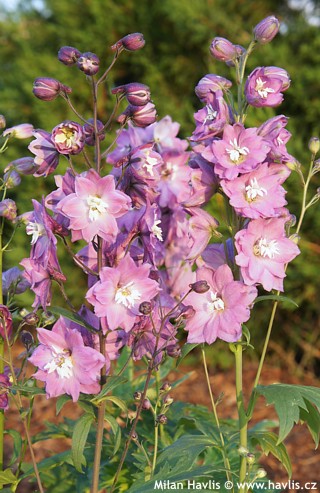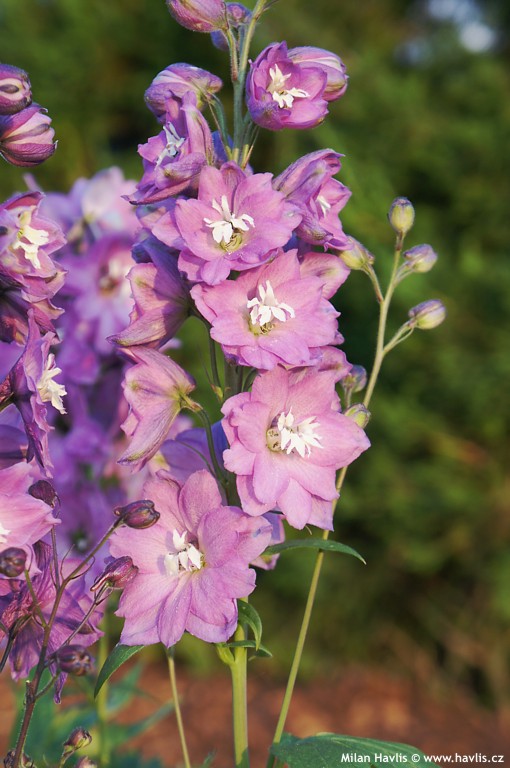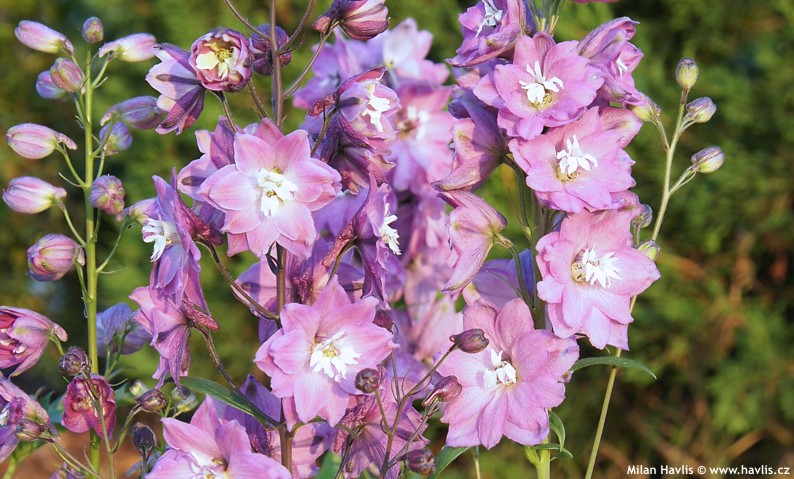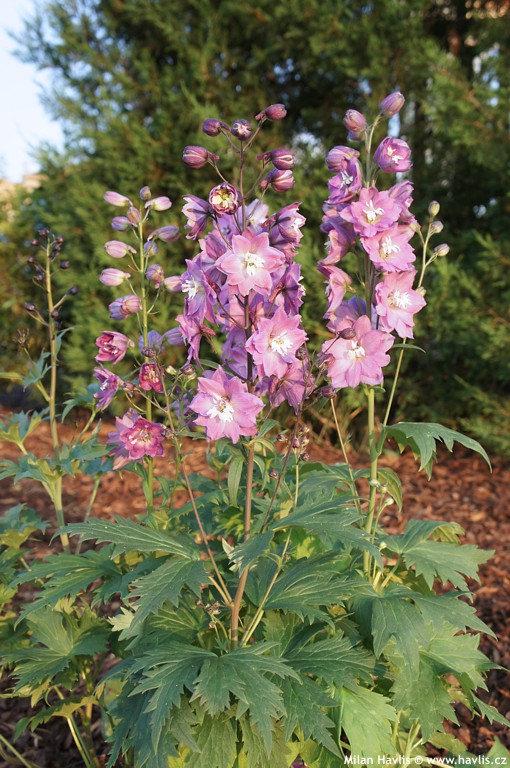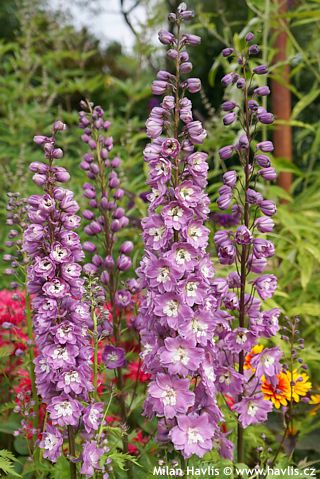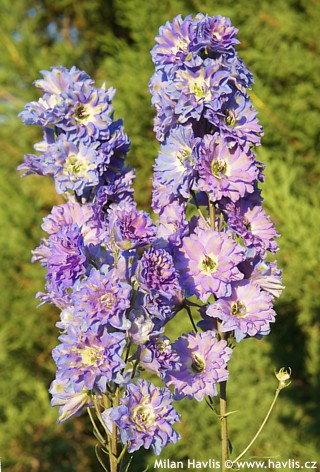Delphinium (Elatum group) 'EXCALIBUR™ LILAC ROSE WHITE BEE' larkspur
size/type
mid-sized perennial,mid-sized perennial
usual height
0,4-0,6m
usual width
0,3-0,5m
leaves
deciduous broadleaf
colour of leaves
flowers
showy
colour of flowers
blooming time
June-September
location
full sun
USDA zone (lowest)
4 (down to -34°C)
winter protection
for zone 5+6

for zone 7

categorized
Delphinium
Larkspur is a favourite perennial whose blue flowers used to be the most popular. Though, in modern gardens and better garden centres you can find new varieties with pink shades or even purple-red shades as well as white. The name delphinium was used to describe the shape of the flower bud which looks like a dolphin (a rather fat one). There are several species that are hybridized with one another so often that in the horticultural world today, rather than species, they are classified as groups that differ from each other in appearance. They are Belladonna Group (upright and tall growth, well-branched, upright, loose spikes with single flowers), Elatum Group (upright growth, often tall, dense spikes with large, single or double flowers), Pacific Hybrids (similar to Elatum but short-lived, rich coloured flowers), grandiflorum (low growth, small flowers on low stems, short-lived or cultivated as annuals).Description of the plant:
The Excalibur™ series of larkspur was developed and propagated by the Syngenta® Flowers breeding research station. They are characterized by shorter growth, profuse flowering for the whole summer, and better resistance to common diseases. Excalibur™ Lilac Rose White Bee is an enchanting larkspur variety producing dusky pink, semi-double flowers, paler to almost white nearer the throat, and adorned with a little white "bee", i.e., a cluster of 6-8 conspicuous dwarf petals. The deciduous leaves are undoubtedly as attractive as the flowers – they are large, up to 20 cm across, medium to dark green, broadly palmate, and deeply lobed with 3 to 5 prominent lobes.The flowers appear from June atop 60-80 cm tall stems and open from the bottom up. You will often encounter short lateral stems bearing fewer and smaller flowers. Once all the flowers have bloomed, cut the entire stem off just above the ground, and soon another one will emerge bearing new buds and flowers. To speed this process up, encourage re-blooming by a weekly feeding programme during the flowering season – apply liquid fertilizer with a high phosphorus content or a universal organic fertilizer. Plants that show exhaustion after the first blooming phase manifest lack of nutrients or moisture. Cut them back completely, feed them heavily, and within 2-4 weeks, you will have a new and lush clump. With such care, larkspur can bloom until October, and I must say, it is a breathtaking spectacle to see fresh blossoms in the perennial garden in the autumn when most other plants have lost their vibe and sheen. I am deeply grateful for the beauty and resilience these flowers bring to the garden, offering a final burst of colour and life.
Grow larkspur in any well-drained, humus-rich garden soil in full sun. It will benefit from mulching as it likes constant moisture. The plant contains toxin which may cause severe discomfort if ingested, or, to some, it may irritate skin. The plant is short-lived unless you dig out the clumps in the spring, divide them and plant back only the young and healthy ones. Fully hardy to min. -34 °C (USDA zone 4), possibly more.
Last update 22-07-2013; 03-02-2025
QUICK PRICE OVERVIEW
CURRENTLY SOLD OUT












